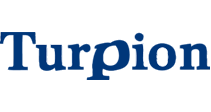Abstract
A laser system is designed for operation with a photocathode electron gun for a linear accelerator with the following parameters of radiation at a wavelength of 262 nm (the fourth harmonic of a Nd:YLF laser). The pulse trains (macropulses) with a repetition rate of 5 Hz and a duration of 900 μs consist of 8-ps micropulses with an energy of 1.4 μJ and a repetition rate of 2.708 MHz. This repetition rate is variable within ±32 kHz and is stabilised by an external signal with an accuracy of 10 Hz. Due to the use of a feedback-controlled acousto-optic modulator, the root-mean-square deviation of the micropulse energy in the first and second harmonics is 2.5% and 3.6%, respectively. Using the decaying branch of the dependence of the second-to-fourth harmonic conversion efficiency on the second harmonic intensity, we decreased the root-mean-square deviation of the energy of the fourth-harmonic micropulses to 2.3% at the first-to-fourth harmonic conversion efficiency of 27%.

